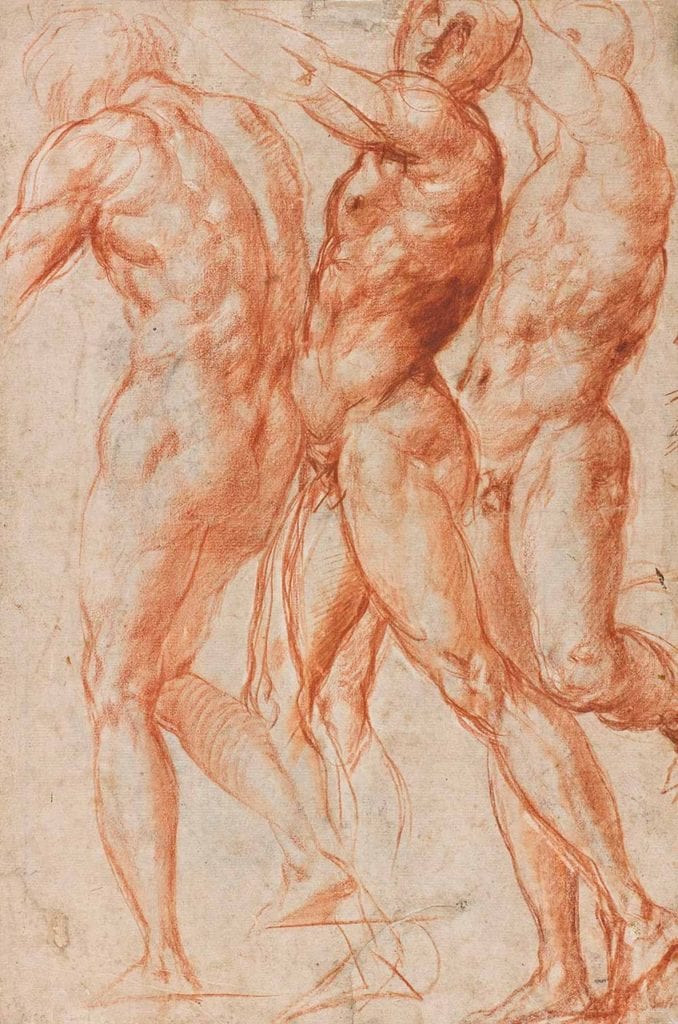
Pontormo (Jacopo Carucci), 1494-1557, Study of Three Nudes, Uffizi Gallery, Florence
This file is licensed under the Creative Commons Attribution-Share Alike 4.0 International license.
Michelangelo
Portrait of Andrea Quaratesi, c.1532
©Trustees of the British Museum
I have always been attracted to the work of the Renaissance Artist. Their work has a quality of life and a sense of breath that seems to have been lost about the time of the photograph.
Their work, very distinctly does not look like a photograph, rather it seems to be infused with movement and life. There is a strong sense of harmony of size, proportion, shape and color. The result is one of a startling beauty and a sense of wholeness and connectedness. You get the feeling that they were not concerned with correctness but rather, in their work lives a real sense of curiosity, investigation and exploration. The work is as fresh today as it was when it was created. Just think of the drawings of Michelangelo, Pontormo, or Raphael.
These are more than gesture drawings, they are infused and layered with intelligence and inquiry. Five hundred years later they remain alive, and open, like that of a genuine question.
In their work we can observe a distinct Conceptualized Approach, as well as a naturalistic observed Visual Approach, the two combined infuse their work with a combination of balance, fullness, wholeness and structure.
Today both approaches are being taught. I have had the opportunity to study in schools that clearly offer these different approaches. Here, I would like to share some observations of the two approaches.
With the Visual Approach, the artist carefully observes the subject or nature. This approach is used in some Ateliers.
Somewhat of a visual meditation, the artist looks at the subject and observes the optical nature of light on form and is encouraged to paint just what they see.
Careful observation is paid to the specificity of the contour and shadow shapes are carefully structured before work on the interior of the form. In the early phases of the work the artist is encouraged to view the form as flat, or 2D. This approach can lend it self to a very specific strong contour, as the sense of overlap is diminished.
As the work progresses, interior information leads to the expression of form and perspective as an outcome of direct observation. When done well, and if the artist is very keen, the Visual approach can lead to work that is infused with a sense of presence, subtlety and nuance. With the less skilled, this approach can lead to paintings that have a strong similarity to that of a photograph, correctness sought in exchange of the qualities of movement and life.
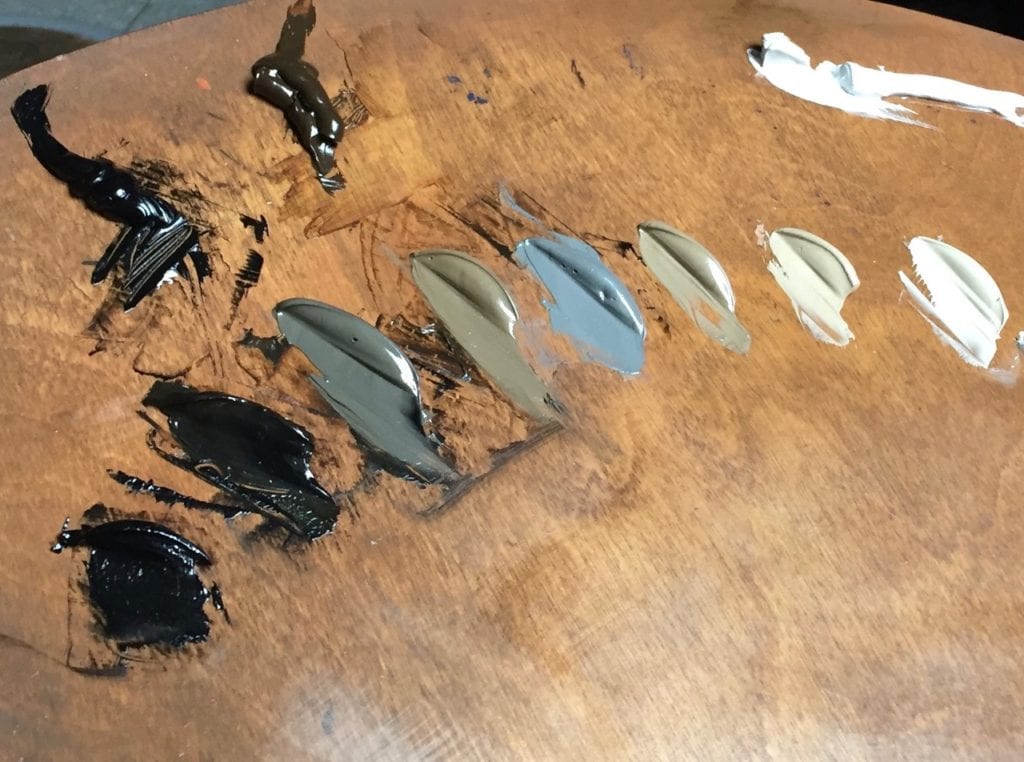
“Enchanted Garden”
The Conceptual Approach, asks the artist to use layers of ideas or concepts to explore their work. Each concept can be viewed as a new question through which the work is explored. There is an abstract quality to this approach yet the finished work may take on an amazing degree of naturalism, a quality of openness, depth and great beauty.
Conceptualism can be applied as layers of questions or as a theme from the beginning.
Conceptualism was used as a theme, with the painting Enchanted Garden. “How few colors can I use and still maintain a sense of colorfulness in my painting?” Harmony achieved through this means has visual unity.
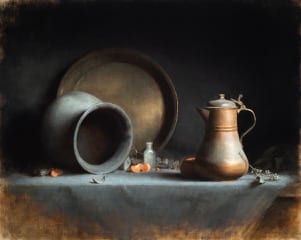
Oil on Linen – 24”x 30”
As the work progressed additional colors were added to expand both the color range and for qualities of opacity and transparency desired in the painting.
Deconstructing our work and exploring solutions through layers of these concepts, infuses our work with what I call “Layers of Intelligence”.
With each concept we pose a new question. These questions become a means of exploration, offering a process of self critique and a vehicle of inquiry that is both useful and simple for the artist to implement.
A conceptual idea, is best understood, posed as a question.
For example, “How can I add a quality of Movement to my work?” The artist then begins the layering of questions that live in the concept of Movement such as: searching for paths that allow Light to travel and flow, through a composition. Pace is an aspect of movement. Here the artist might use the tool of Brushstroke, to slow the eye with short strokes across the form, longer swift strokes along the form imply speed, brush strokes purposefully diminished infusing a quality of stillness, space and air.
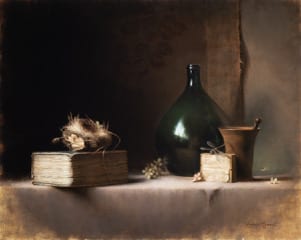
Oil on Linen – 24”x 30”
Shadows give structure to the movement of the light. Whether soft and smoky, having the effect of a comma in literature, or dark and commanding like the use of a period.
Movement through Edge variety, hard edges used to grab attention and create focus Look Here, lost and soft edges, relinquish attention and ask us to Move On.
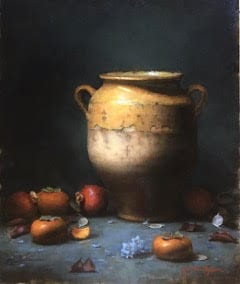
by Rachele Nyssen
Oil on Linen – 20” x 16”
Movement as Line, over laps with the concept of Design. We are able to observe movement as line designed clearly into the portraiture of the great masters. Abstract spiraling line designed into distinct patterns of radiance. In greek vase paintings we see line used to imply movement as rhythm, in the repetition of line and form. Beauty by design, concept over lapping concept.
Movement explored as Gesture is a very common abstract concept that the artist often refers to over and over again particularly when working with the live model. Gesture unchecked can result in exaggeration, subtly and nuance lost. The artist always seeking balance.
Movement is just one of the many concepts an artist can explore. Master artist juggle many of these concepts at the same time.
As each concept implies a question, we begin to observe the quality of our questions. As we begin to ask better questions our solutions develop elegance. The sum of all of our solutions, our finished painting. A window into the mind of the artist, everything that they were thinking, over the time of the production of a painting or drawing.
How we choose to balance these two approaches is part of our personal expression. In my own work, I have been exploring the integration of these two approaches into one that reflects my values, sensibilities and artistic aesthetic. The question I most often find myself asking is “How can I see this more beautifully, more whole, more unified? I begin by looking for beautiful relationships.
I hope you can see beauty and elegance in the solutions that I am finding.
What questions are you asking?